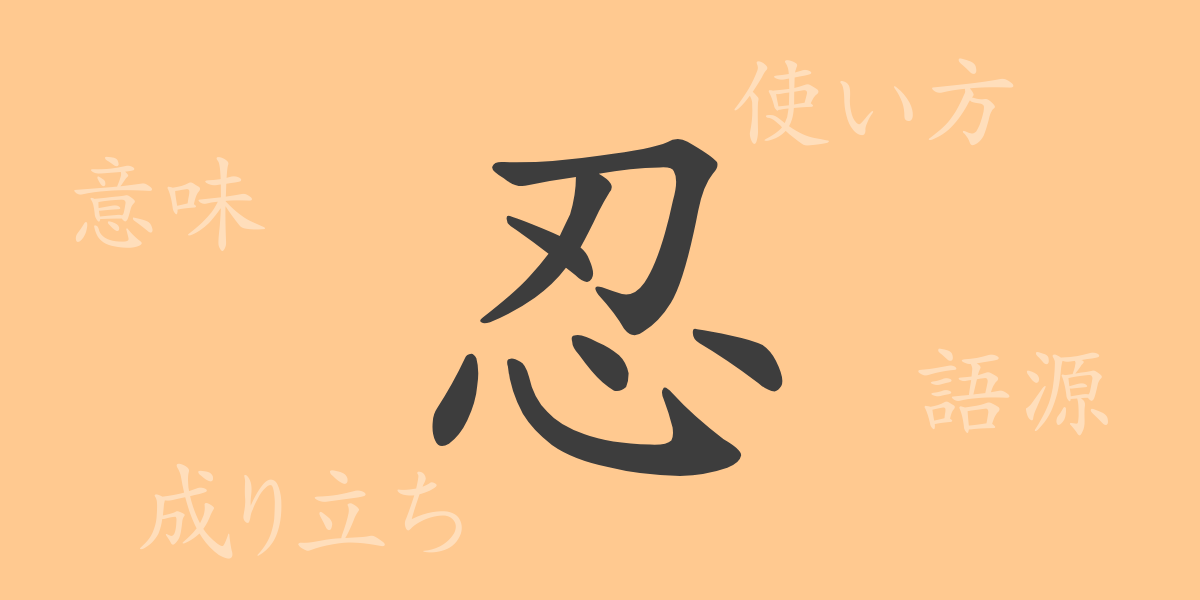Japanese culture is deeply rooted in Kanji, where each character holds a multitude of meanings and history. What stories are hidden behind the character ‘忍 (にん)’? From the ancient spirit of ‘ninjutsu’ to its modern-day usage, this article explores the profound world embodied by the Kanji ‘忍’.
Origins of ‘忍 (にん)’
The Kanji ‘忍’ is formed by placing ‘刃 (blade)’ above and ‘心 (heart)’ below, symbolizing a heart that endures the blade. This composition represents patience and the spirit of endurance. In ancient China, this character was already used to denote perseverance and stealthy actions, and it has maintained similar meanings after being adopted in Japan.
Meaning and Usage of ‘忍 (にん)’
‘忍’ means ‘to endure’ or ‘to bear.’ It also encompasses ‘to hide’ or ‘to act covertly,’ often used in contexts related to ninjas and ninjutsu, where secretive actions are pivotal. In everyday conversation, it’s used to encourage resilience in the face of difficulties, as in ‘one should be patient.’
Readings, Stroke Count, and Radical of ‘忍 (にん)’
The Kanji ‘忍’ reflects its rich meaning and complexity in its multiple readings and intricate structure.
- Readings: On’yomi ‘ニン’, Kun’yomi ‘しの.ぶ’, ‘しの.ばせる’
- Stroke Count: 7 strokes
- Radical: Heart (also known as りっしんべん)
Phrases, Idioms, and Proverbs Using ‘忍 (にん)’
There are numerous idioms and proverbs that include ‘忍’. For instance, ‘忍耐力 (にんたいりょく)’ meaning ‘resilience,’ ‘忍び足 (しのびあし)’ referring to ‘stealthy steps,’ and ‘忍従 (にんじゅう)’ which means ‘to submit or endure.’ The proverb ‘忍の一字は金の如し’ translates to ‘A single word of patience can be worth as much as gold,’ emphasizing the value of endurance.
Conclusion on ‘忍 (にん)’
While seemingly simple, the Kanji ‘忍’ carries a rich background of history and culture. Symbolizing a heart that endures, this character has played a significant role in Japanese culture, including the creation of the unique figure of the ninja. Today, its spirit continues in many aspects of life, embodying the power of words and influencing our daily interactions.

























